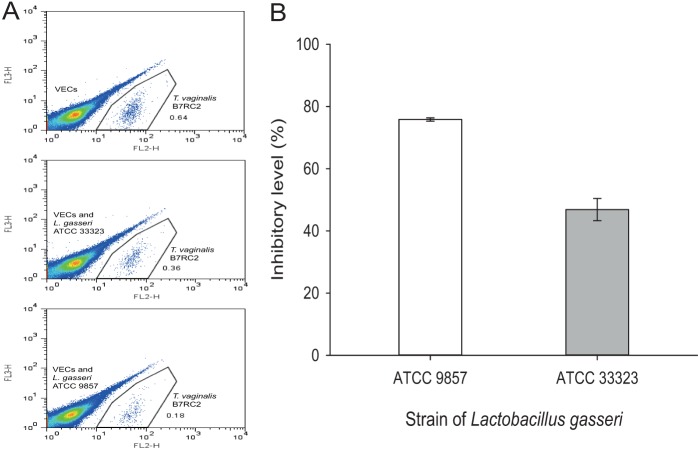FIG 1.
L. gasseri ATCC 9857 is highly inhibitory toward T. vaginalis B7RC2 adhesion to hVECs. In this assay, lactobacilli were preincubated with hVECs, followed by addition of CMTMR-stained T. vaginalis. As a control, hVECs and stained T. vaginalis cells were incubated without bacteria. At the end of the incubation, unbound parasites were removed and bound parasites only were collected after trypsinization and counted by flow cytometry (see Materials and Methods). The number of hVEC-bound T. vaginalis cells in the presence of L. gasseri strain ATCC 9857 or ATCC 33323 (originally isolated from the human vagina and intestine, respectively) was compared to that for the control in order to determine the percent inhibition of T. vaginalis adhesion to hVECs. (A) Flow cytometry data depicting the separation of CMTMR-stained, hVEC-bound T. vaginalis (FL-2 channel) from a mixed population of unstained lactobacilli and/or hVECs. (B) Percent inhibition of T. vaginalis adhesion to hVECs by the two Lactobacillus strains. The differences between both samples and the control were statistically significant (P < 0.01). Lactobacillus strain ATCC 9857 was more inhibitory to T. vaginalis cytoadhesion than strain ATCC 33323 (P < 0.001).

